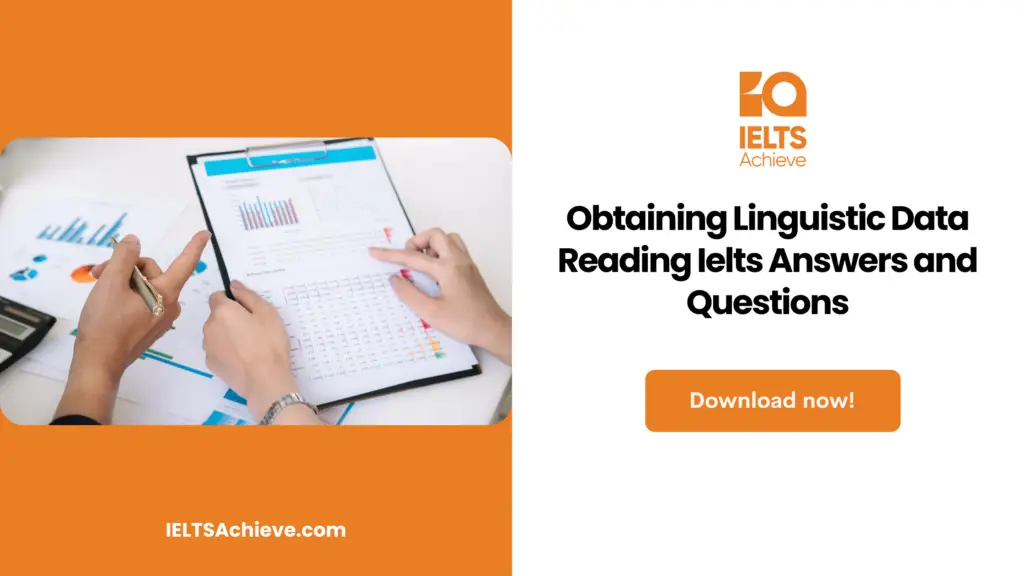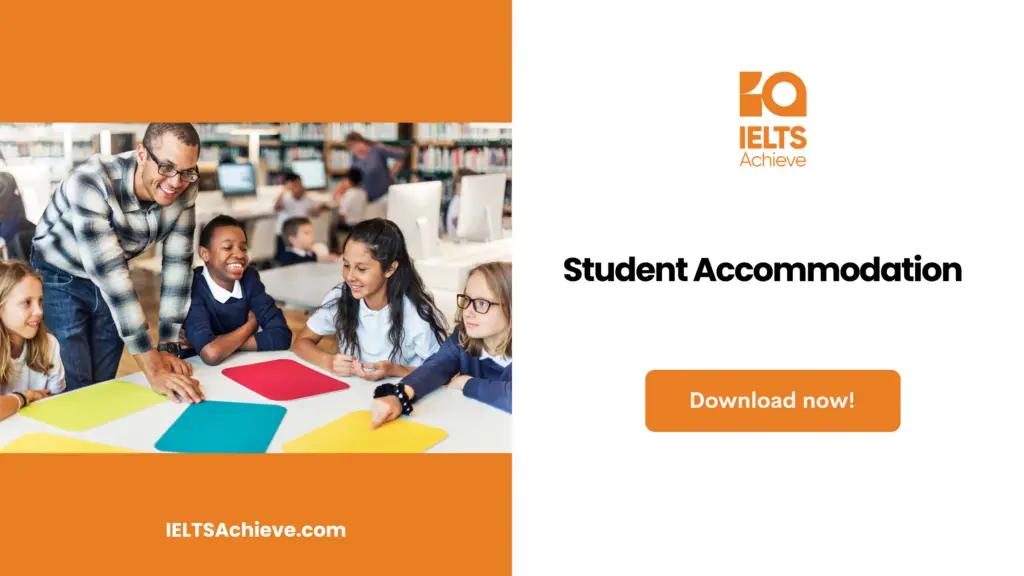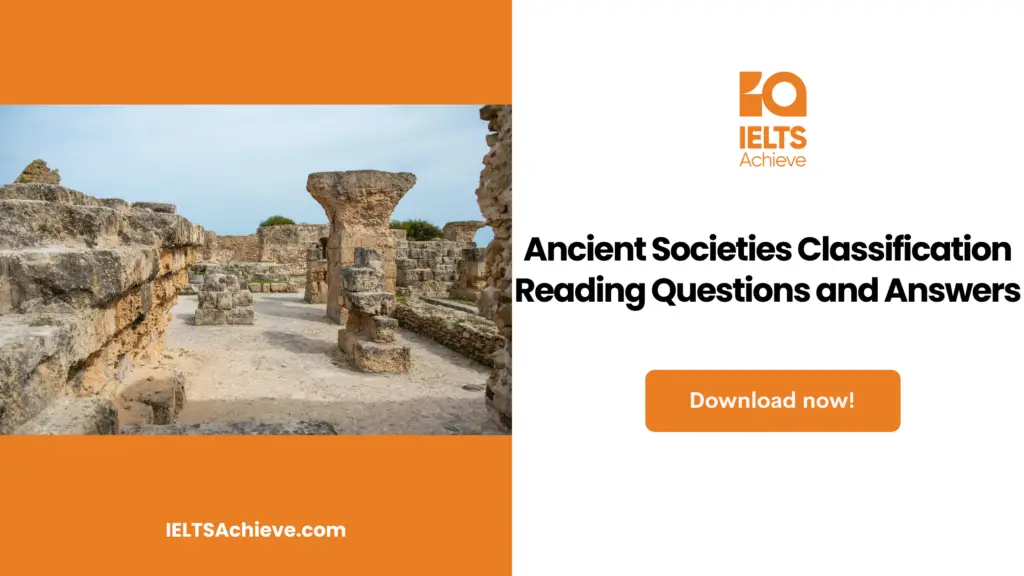The Blog post contains the following IELTS Reading Questions:
- IELTS reading Locating Information
- IELTS reading Summary Completion
- IELTS reading Table completion
Stay informed and prepared for success – Explore our comprehensive Reading Test Info page to get valuable insights, exam format details, and expert tips for mastering the IELTS Reading section.
IELTS reading test- obtaining linguistic data

Obtaining linguistic data
A. Many processes are accessible for acquiring data about a language. They span from an attentively planned, intensive field investigation in a distant country to an normal introspection about one’s mother tongue transfer to recliner at home.
B. In all occasions, someone has to behave as the origin of language data- and source tipsters are (preferably) verbalizers of a language, who provide remarks for investigation and other kinds of details about the language(illustration- rephrasing, utterance about correctness, or judgements on utilization). Frequently, when studying their mother tongue, grammarians act as their own tipsters, judging the ambivalence, desirability,or other properties of remarks opposed to their own instinct. The benefit of this manner makes it broadly used, and it is thought about the standard in the fecund manner to grammarians. But a grammarian’s personal judgments are frequently unsure or differ with the judgements of other grammarians,at which point an option is needed to more unbiased methods of query, using non- grammarians as tipsters.
The closing process is unpreventable when working on distant languages or child speech.
C. Many factors must be thought about when choosing tipsters- if one is working with single speakers( an ordinary occasion when languages have not been reported before), two people communicating, small groups or large – scale examples. Sex, Age, social background and other features of specification are must, as these factors are known to effect the kind of language used. The subject of interaction and the feature of social setting (sample – the level of ritual) are also highly pertinent, as are the personal standards of the tipsters (example their flow and stability). For larger studies, excess attention has been paid to instance theory employees, and in all occasions, resolutions have to be made about the best analytical approach to use.
D. Today, analysts frequently cassette- record tripsters. This authorizes the grammarians about the language to be examined, and supplies a way of making those asserts more correct (‘ hard’ bits of speech can be listened to frequently). But getting lifelike, good-grade data is never easy. People talk irregularly when they know they are being tape, and sound standard can be poor. A kind of cassette-recording process has been conceived to reduce the ‘spectator’s contradictions’ (how to notice the way people act when they are not being noticed). Some notes are made without the speakers being knowledgeable of the fact – a process that gets very natural data, even so moral protest must be expected. On the other hand, try can be made to make the speaker forget about the tape, such as keeping record out of sight or using radio microphones. A useful approach G is to initiate a topic that quickly includes the speakers and restorative a natural language style ( sample asking older tipsters about how times have swapped in their locality).
E. An audio cassette- recording does not solve all the grammarians’ issues, however. Speech is frequently unclear and doubtful. Where possible, consequently, the recording has to be augmented by the spectators’ written remark on the non-verbal act of the contributor, and about the context in common, a facial appearance, for illustration can badly change the meaning of what is said. Video recording avoids these issues to a marked degree, but even they have restrictions ( the camera cannot be everywhere), and the transcript always takes advantage of any extra explanation given by a spectator.
F. Linguists also make enormous use of arranged sessions, in which they thoroughly ask their tipster for remarks that explain certain actions, objects or actions. With a multilingual tipster, or via use of a translator, it is feasible to use a rendition approach (‘How do you say table in your language?’). A huge number of points can be completed in a short time, using meeting worksheets and questionnaires. Frequently, the analyst wishes to get details about just one variable, in which case a circumscribed set of questions may be used: a specific characteristic of pronunciation, for illustration, can be obtained by asking the tipster to say a circumscribed set of words. There are also some direct ways of educe, such as asking tipsters to fill in the blanks in an exchange frame( for example I___ see a car), or feeding them the wrong incitement for correction(‘Is it possible to say/no can see?’).
G. A typical illustration of language, assembled for the intend of linguistic inspection, is known as a corpus. A corpus authorized the linguist to make impartial declarations about regularity of utilization, and it gives reachable data for the use of various analysts. Its standard and size are changeable. Some corpora try to cover the language as a whole, taking extracts from many kinds of text ; others are very choosy, giving a group of material that deals only with a specific linguistic characteristic. The size of the corpus depends on practical elements, such as the time obtainable to collect, procedure and store the data: it can take up to some hours to give a correct transcription of a countable minutes of speech. Sometimes a small example of data will be sufficient to decide a linguistic hypothesis; by difference, corpora, whatever their size, are naturally limited in their scope, and always need to be augmented by data obtained from the instinct of native speakers of the language, through either brooding or testing.
Unlock your full potential in the IELTS Reading section – Visit our IELTS Reading Practice Question Answer page now!
Recommended Questions:
Renewable Energy IELTS Reading Question with Answer
Questions 1-5
Reading Passage has seven paragraphs labeled A-G. Which paragraph contains the following information? Write the correct letter A-G in boxes 1-5 on your answer sheet. NB You may use any letter more than once.
1 the effect of recording on the way people talk
2 the importance of taking notes on body language
3 the fact that language is influenced by social situation
4 how informants can be helped to be less self-conscious
5 various methods that can be used to generate specific data
Questions 6-10
Complete the table below. Choose NO MORE THAN THREE WORDS from the passage for each answer.Write your answers in boxes 6-10 on your answer sheet.
| METHODS OF OBTAINING LINGUISTIC DATA | ADVANTAGES | DISADVANTAGES |
| 6______ as informant | convenient | method of enquiry not objective enough |
| non-linguist as informant | necessary with 7______ and child speech | the number of factors to be considered |
| recording an informant | allows linguists’ claims to be checked | 8______ of sound |
| videoing an informant | allows speakers’ 9_________ to be observed | 10_______ might misscertain things |
Boost your performance in Summary, Notes, Table, and Flowchart Completion tasks. Click here to explore our detailed guide and learn how to effectively complete summaries, notes, tables, and flowcharts in the IELTS Reading section.
Questions 11-14
Complete the summary of paragraph G below. Choose NO MORE THAN THREE WORDS from the passage for each answer. Write your answers in boxes 11-14 on your answer sheet.
A linguist can use a corpus to comment objectively on 11_________ . Some corpora include a wide range of languages while others are used to focus on a 12_________ . The length of time the process takes will affect the 13____________ of the corpus. No corpus can ever cover the whole language and so linguists often find themselves relying on the additional information that can be gained from the 14___________ of those who speak the language concerned.
Boost your performance in Summary, Notes, Table, and Flowchart Completion tasks. Click here to explore our detailed guide and learn how to effectively complete summaries, notes, tables, and flowcharts in the IELTS Reading section.
Unlock your full potential in the IELTS Reading section – Visit our IELTS Reading Practice Question Answer page now!
Recommended Questions:
Renewable Energy IELTS Reading Question with Answer
Obtaining linguistic data reading answers
1.D
2.E
3.C
4.D
5.F
6.linguistician
7. distant languages
8. Standard can be poor
9.non-verbal act
10.camera// video camera// recording// video recording
11.. Regularity of utilization
12.. Specific linguistic characteristic
13.size
14.instinct

